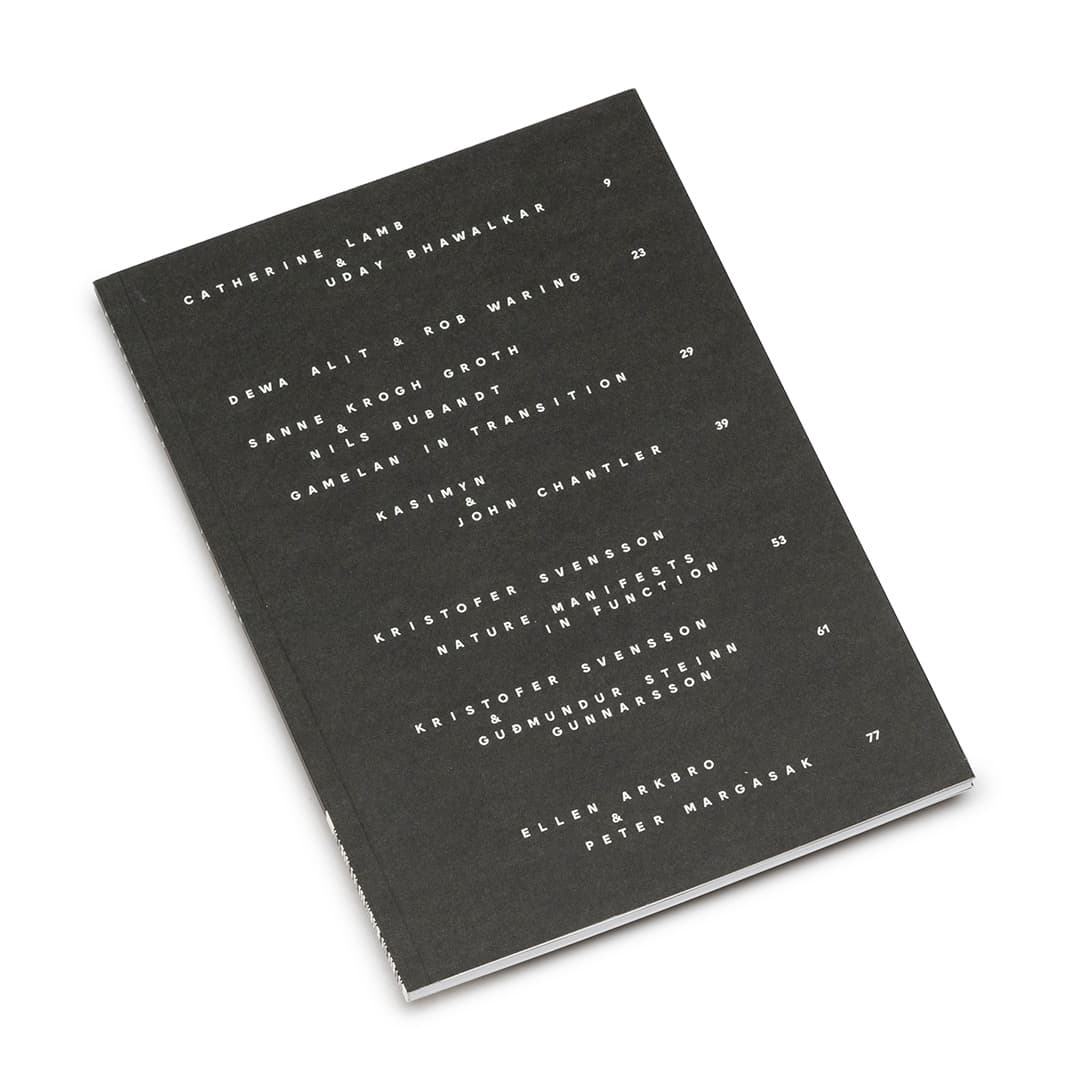
Fönstret #6 — In Tune — is a printed volume of conversations and essays published on the occasion of the Sixth Edition Festival for Other Music.
96pages. b&w, soft cover w. french flaps.
//
Uday Bhawalkar & Catherine Lamb
//
Dewa Alit & Rob Waring
Sanne Krogh Groth & Nils Bubandt — Gamelan in transition
Kasimyn & John Chantler
//
Kristofer Svensson — Nature manifests in function
Kristofer Svensson & Guðmundur Steinn Gunnarsson
//
Ellen Arkbro & Peter Margasak
Ellen Arkbro is a Swedish composer and sound-artist primarily working with intervallic harmony in just intonation.
Sanne Krogh Groth is Associate professor in Musicology and office director at Sound Environment Center at Lund University, and editor-in-chief of the academic section of the online journal Seismograf. Groth's research addresses historiographic, aesthetic, political and institutional issues within the fields of contemporary music, electronic music and sound art in the 20th and 21st century.